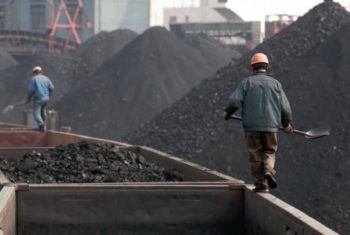
Now a new report is out, analyzing the data and showing that cities told two very different stories about the likelihood of climate change harms when talking to investors and to trial lawyers.
After a yearlong study of bond issuances by 40 major U.S. cities, the Government Accountability Institute (GAI) found that mayors’ “apocalyptic” projections about the effects of climate change are rarely factored into the interest rates of the bonds these municipalities issue, undercutting one of the key arguments used in the liability suits.
In their lawsuits, the cities argued that climate change was certain to cause billions of dollars in damages in the coming decades.
When looking to sell municipal bonds, however, they were more coy, telling investors that the risks of climate change were impossible to predict.
GAI’s study compared 100 bond issuances for 20 cities at risk of sea-level rise from global warming, and 20 cities with little to no risk of sea-level rise—like Chicago and Kansas City—to see if the supposed climate risks produced higher bond interest rates for investors.
They found that the average rate of at-risk cities was 4.21%, compared to 3.99% for low-risk cities, a difference that was deemed not statistically significant.
This might be because cities rarely mentioned climate change in bond disclosure documents.
Disclosure statements for the 20 at-risk cities added up to more than 4,300 pages, but referenced phrases like “climate change” and “sea-level rise,” fewer than 100 times.
According to the researchers, 12 of the 20 disclosures did not use climate language at all.
That’s not how activist city governments have been framing the issue for the press, however. NYC Mayor Bill de Blasio has called climate change “a dagger aimed at the heart of New York City.”
Meanwhile, the city of Baltimore filed a lawsuit against energy companies alleging that climate change was leading to “property damage, economic injuries, and impacts to public health.”
In a Wall Street Journal op-ed tied to the report’s release, GAI President Peter Schweizer highlighted the inherent contradiction between the stories climate activists mayors tell in lawsuits against ExxonMobil and other energy companies and the picture they paint for investors.
“The results revealed a gulf between the words municipal leaders speak and the disclosures cities make. There was no statistically significant difference in the interest rates for bonds issued by cities in high-risk locations for climate-change devastation versus those issued by low-risk cities.”
This trend surprised the authors of the report, who admitted that they “expected to find” that cities and states identified as being at a greater risk of suffering economic harm from rising sea levels would pay higher interest rates.
That assumption proved to be untrue.
“[The] small variations we did find were statistically insignificant and showed no correlation to the risks prophesied—elsewhere—by city or state politicians. The clear implication of this is that not only do bond-issuing city and state leaders not credit their own, sometimes dire, rhetoric, but the analysts, underwriters, and institutional buyers discount it as well.”
In this, the report confirms arguments made last year in a petition filed by ExxonMobil in a Texas District Court.
The legal filing highlighted the discrepancy between how cities talked about the scope and risk of climate change harms when talking to investors and how they described them in their lawsuits against the company.
“Notwithstanding their claims of imminent, allegedly near-certain harm, none of the municipalities disclosed to investors such risks in their respective bond offerings, which collectively netted over $8 billion for these local governments over the last 27 years. To the contrary, some of the disclosures affirmatively denied any ability to measure those risks; the others virtually ignored them.
At least two municipal governments reassured investors that they were ‘unable to predict whether sea-level rise or other impacts of climate change or flooding from a major storm will occur, when they may occur, and if any such events occur, whether they will have a material adverse effect…’
“The stark and irreconcilable conflict between what these municipal governments alleged in their respective complaints and what they disclosed to investors in their bond offerings indicates that the allegations in the complaints are not honestly held and were not made in good faith.” (emphasis added)
Read more at EID Climate



















Whether it’s municipalities “fudging” on bond risks, climate alarmists claiming imminent “crisis” or environmental activists “demonizing” energy PROVIDERS, it all is summed up in two words: BAD FAITH…
I spent a week up in Park City, UT, with my brother and our spouses a month ago to see the changing colors. Right next to the resort we were staying at there was construction for two new condo facilities, one almost complete with just a couple units left for sale, the other just starting construction. So even though the city’s mayor was talking about how “climate change” was going to be devastating for the area’s snow apparently the city was willing to approve these buildings and investors were willing to build them. And buyers were willing to plunk down $500K for a studio condo and upwards of $4M for 3-4 BR units. So it seems that no one really believes the world is about to end due to additional CO2 in the atmosphere. What a shock!
These lawsuits are totaly idiotic and based upon junk science lies and politics they have nothing to do with real science and therefore these lawsuits need to be tossed out